More than 70 percent of new drugs approved within the past 30 years originated from trees, sea creatures and other organisms that produce substances they need to survive. Since ancient times, people have been searching the Earth for natural products to use—from poison dart frog venom for hunting to herbs for healing wounds. Today, scientists are modifying them in the laboratory for our medicinal use. Here’s a peek at some of the products in nature’s medicine cabinet.
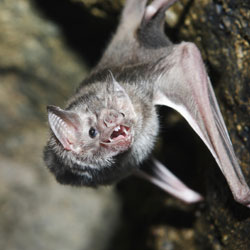
A protein called draculin found in the saliva of vampire bats is in the last phases of clinical testing as a clot-buster for stroke patients. Vampire bats are able to drink blood from their victims because draculin keeps blood from clotting. The first phases of clinical trials have shown that the protein’s anti-coagulative properties could give doctors more time to treat stroke patients and lower the risk of bleeding in the brain.
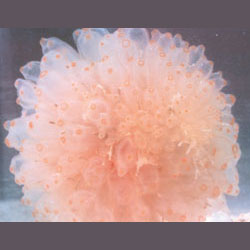
Sea squirts in the crystal waters of West Indies coral reefs and mangrove swamps are the source of an experimental cancer drug called Yondelis. The drug binds to DNA and damages specific genes, which slows cancer cell division, growth and spread. The first set of clinical studies has shown that the drug is safe for use in humans. Additional phases of clinical testing are underway to evaluate whether Yondelis effectively treats tumors of the muscles, tendons, supportive tissues and other types of cancer.
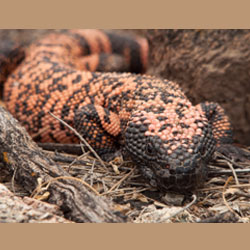
A hormone found in the saliva of the gila monster, a venomous lizard from the woodlands and deserts of the American Southwest, was modified to help people with type 2 diabetes maintain healthy blood sugar levels. Since gila monsters only eat about twice a year, their sugar storage hormone is active for much longer than insulin is in humans. The hormone-derived drug, Byetta, also slows the movement of food from the stomach into the small intestine, which often results in weight loss in diabetics.
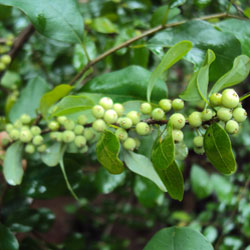
The guggul tree is native to India and has been used in Ayurvedic medicine since at least 600 B.C. to treat obesity and lipid disorders. Scientists are conducting preliminary studies to explore the cholesterol-lowering properties of guggulsterone, a compound in the sap of the guggul tree. Researchers think guggulsterone blocks receptors in liver cells and alters cholesterol break down. Studies have also suggested that guggulsterone has anti-inflammatory properties and can lower triglyceride levels.
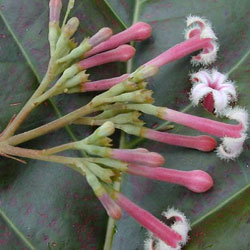
The bark of the cinchona tree, found in the Amazon rainforest, is the source of the antimalarial drug quinine. Isolated by French chemists in the early 19th century, quinine treats malaria by altering the life cycle of the malaria parasite. Since then, scientists have designed other antimalarial drugs including chloroquine, mefloquine and other derivatives that are chemically similar to quinine. Another natural product, sweet wormwood plant, is the basis of the malarial treatment artemisinin.
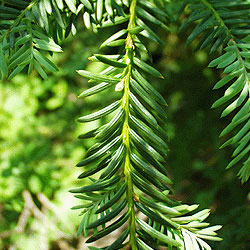
A chemical produced by the Pacific yew tree is now the cancer-treating drug paclitaxel (Taxol). The plant-derived drug works by inhibiting the function of microtubules, structural elements that are needed for cell division. By preventing cancer cells from dividing, Taxol stops the cancer from growing. Taxol is used to treat a variety of cancers including breast, lung, prostate and ovarian cancer.
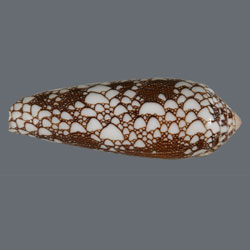
Cone snails in the waters near Australia, Indonesia and the Philippines have toxin-packed venom that’s being studied as a treatment for chronic pain. Prialt, a synthetic compound modeled after a toxin in the venom, is 1,000 times more powerful than morphine in treating certain kinds of chronic pain. The snail-derived drug jams nerve transmission in the spinal cord and blocks certain pain signals from reaching the brain. It’s prescribed to help manage the pain of people suffering from multiple sclerosis, AIDS and cancer.
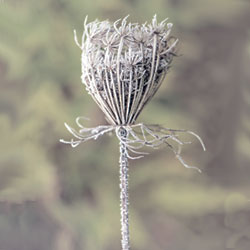
Psoralen, derived from a Nile-dwelling plant called Bishop’s weed, is a key component of photodynamic therapy, which is used to treat several cancers. Once activated by light, psoralen attaches tenaciously to the DNA of rapidly dividing cancer cells and kills them. Psoralen is also prescribed to increase the ultraviolet absorptivity of skin so UV light can then be used to treat severe skin conditions like psoriasis and eczema.
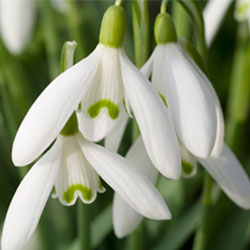
Galantamine, a compound extracted from the bulbs and flowers of daffodils, spider lilies and snowdrops, is prescribed to stabilize and improve cognitive function in Alzheimer’s patients. It works by preventing the breakdown of acetylcholine, a chemical that sends messages between certain nerve cells and is important for learning and memory.
The vampire bat, gila monster, bishop’s weed and snowdrop images courtesy of iStock; Sea squirt image courtesy of Pharmamar; Commiphora wightii (guggul tree) image courtesy of Vinayaraj V R under CC BY SA 3.0; Cone snail image courtesy of Kerry Matz, University of Utah; Cinchona tree image courtesy of U.S. Geological Survey; Pacific yew tree image courtesy of Virginia Tech, Department of Forest Resources and Environmental Conservation.











JAYA JAYA SHRI KRUSHNA!
I have been a student of Botany and Zoology (M.Sc.). So, it is nothing new for me. Yet, I join in these wonderful discoveries in the medical cabinet of nature. Later on, I became a devotee of Lord Krushna/ Krishna. And God has said in Gita, “Where ever you find anything special, it is Me only”! So, now I can see the presence of God in these animals and plants. God has arranged all these things, as if, for the ultimate benefit of mankind, His best creation. We should all be devoted to the Almighty and be His devotees. Compliments to the author and all others involved. HARI BOL!
This is the great information…I love to read this kind of blog….